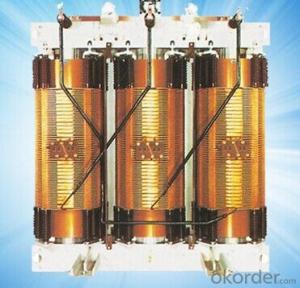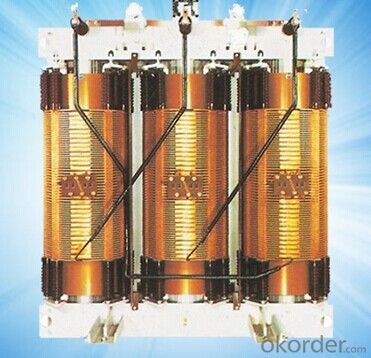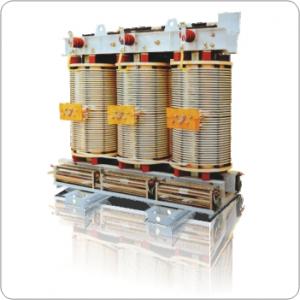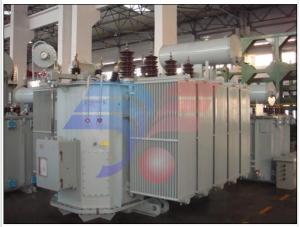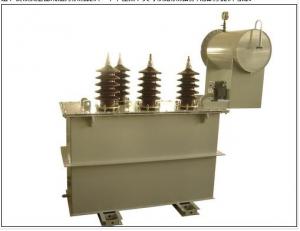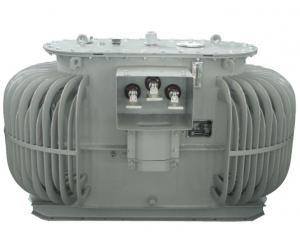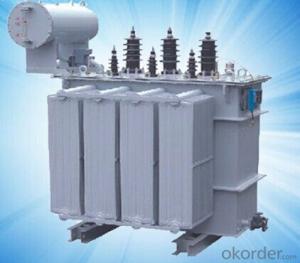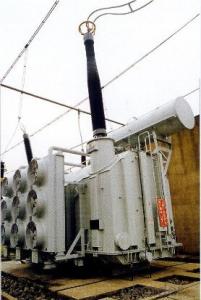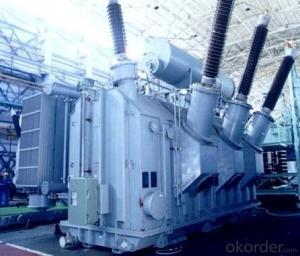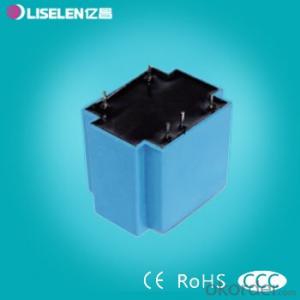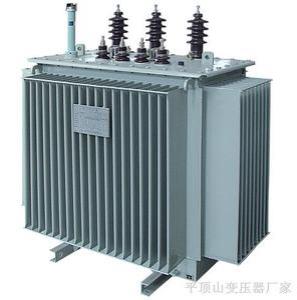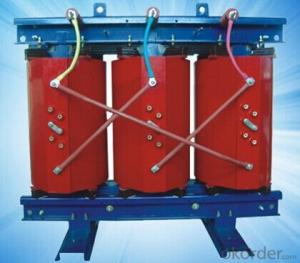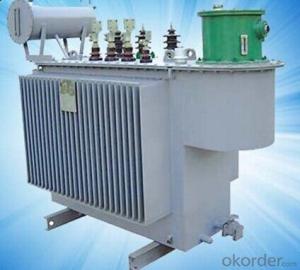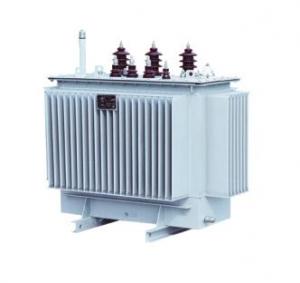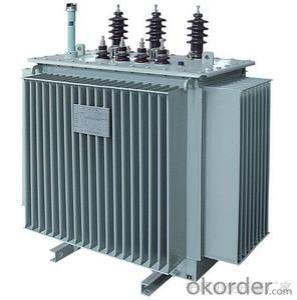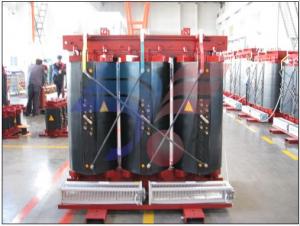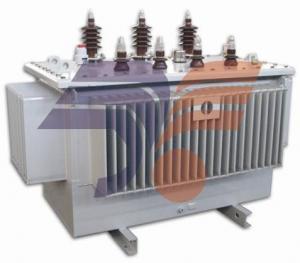SG(B)10-125~125~2500/10KV Three Phase Impregnated Dry Type Power Transformer
OKorder Service Pledge
OKorder Financial Service
You Might Also Like
SG(B)10-125~125~2500/10KV three phase impregnated dry type power transformer is a new dray type transformer and its advanced technology is imported from germany MORA company,it uses special design and manufacturing engineer in order to reach the requirment of "three proof"( moisture proof.mould proof ,salt mist proof )and environmental protection .it applies to craft of vacuum-pressure dipping,its heat-resisting class reaches Hlevel and it has strong capability of fiire retardant.it is an ideal production of distribution system.it is applicable to power ,undegroung,shipping,chemical industry.high rise building and other places.

- Q: 80 kilowatts of electrical appliances need much transformer?
- The selection of the transformer is based on the current. 80KW electrical current is 210A210 times (380 multiplied by 1.732) 138kva above the transformer can
- Q: 10KV distribution transformer how to calculate the tap voltage
- 10kV distribution transformer tap voltage can be Ue ± Ue X% (X is the percentage of each range of adjustment). General distribution transformer tap adjustment range of Ue ± 2 × 2.5%; tap for 1 - 5, the tap voltage is calculated as follows: 1 ----- 10+ (10 x (2 x 2.5%)) = 10.5 kV 2 ----- = 10 + (10 x 2.5%) = 10.25 kV 3 ----- 10kV rated voltage, 4 ----- = 10- (10 x 2.5%) = 9.75 kV 5 ------ 10- (10 x (2 x 2.5%)) = 9.5 kV Transformer tap on the high side, according to the needs of the low side to adjust the high pressure side of the tap position. If the low voltage side of the low pressure should be raised to 4 or 5, and vice versa to 2 or 1 up. Because the adjustment tap is used to change the transformer ratio. In the case of a transformer with a rated voltage of 10 / 0.4kV, its change ratio K = U1 / U2 = 10 / 0.4 = 25; when the secondary voltage is low, if the split is set to 4, the position K4 = U1 / U2 = 9.75 / 0.4 = 24.375, the primary voltage is still 10kV secondary voltage = 10 / 24.375 = 410V. Increased secondary voltage. In fact the adjustment of the split is adjusted by the number of turns of the coil, the change in the ratio and the number of turns of the secondary coil is constant. To reduce the secondary voltage, increase the number of turns of the coil.
- Q: 2500KVA transformer bearing current how much calculation
- According to P = 1.732UI, you can calculate the rated current on each side of the transformer. But the transformer in a short time usually have a certain overload capacity, so the current overload will be greater than the rated value.
- Q: How to use a multimeter to determine the quality of small transformers
- First with a multimeter resistance file RX1 or RX10 to test the transformer on both sides of the coil! Have to pass! Primary resistance large! Secondary resistance small! (Buck) And then test the first class! Can not pass! Basic determination is good! And then use the transformer at both ends of the primary coil to take the multimeter AC voltage 50-100 volts stalls! With a dry battery to touch the transformer secondary coil ends! At this point multimeter watch pin should have a strong swing! Induced current and mutual inductance voltage! This proves that the transformer all normal! No turn-to-turn short circuit!
- Q: Hello friendsi need transformer for my project (regulated power supply) i need 220 50hz ac input and 3 volt 50hz out put ac voltage is this possible.what is wattage of that rating transformer?thanks a lot
- Watts rating of the transformer depends on the load. If you have a 10 amp load, for example, that is 10x3 30 watts, so you need a transformer a bit larger than that, say 35 or 40 watts. PS, you will probably not be able to find this transformer available. You may have to settle for a higher voltage, say 5 or 6 volts and reduce it by some other means, or by rewiring the transformer. .
- Q: i can't seem to think of the name or artists of this song. All I could remember it has transformer lyrics (not the theme song). it has an old school hip hop/rap vibe to it but i need help of what's the name of it, thanks!!!
- Kurtis okorder
- Q: I have contacted Crate and they gave me a list of parts dealers but all insist that they do repairs and not sell just power transformers. I am looking for a part #94-029-01. Thank you for any help!!
- First, what you need to know is the secondary voltages of the transformer you wish to replace. A part number is nice, but tells you very little, unless you have a book on hand, and usually, these numbers are only for that product line (in house) part numbers. I can tell you where to go to find a power x-fmr. but will need to know: How many watts will said amplifire send to the speakers, how many wires come off of the secondary, and how big is it? If you can get a schematic drawing of your amplifire with power transformer output voltages, I can tell you exactly where to get a transformer from. Feel free to e-me. Why did it fail? Are you sure that the power transformer is bad? There may be other issues, here. I rarely see a transformer go bad under normal use. If the fuse blows, replace it with a 1/2 amp larger than it calls for. If it calls for a 2 amp fuse, try a 2.5 amp fuse. If it still blows, try a 3. if it still blows, you may have a short in the power output section of your amp. I don't normally recommend that higher fuse ratings should be used, but that is what I would do if I was working on it. You may find other issues besides the power transformer. If you have voltage going into (the primary) and no voltage on the secondary at all, then you might have a transformer that has a thermal cutoff unit that is hooked up in series with the primary windings protecting the transformer from over heating. This has been known to happen, and can be easily repaired, if you have the right tools, a soldering iron, and a lot of patience. I can walk you through it.
- Q: Hi there.I have purchased a Stepdown Transformer so i can use a Record Cleaning Machine I am buying from the U.S.It uses a powered suction unit to clean the record.All transformers for use with American equipment have 110v output, but i think your equipment is usually 120v.in I have been told that there is nothing to worry about as 110v out on the transformer is enough to power the equipment connected to it .Our AC output in Australia is 240v but we can use any voltage from 220 to 250. Therefore 110v should be enough.can anyone clarify and tell me it should be ok.Thanks a lot in advance.
- I live in New Zealand. We use 240v 50Hz mains here too. USA uses 110/115v 60Hz. There is a 10Hz voltage frequency difference as well as the voltage difference. The stepdown transformer will be rated for 110v RMS(root-mean-squared). This is a kind of average, for want of a better description. The peak voltage is 0.707 times the RMS voltage. This is the peak on one half of the sine-wave(180'), therefore the complete sine-wave mains frequency represents 1.414 times the RMS voltage.(360' sine-wave cycle) Multiply 110v by 1.414, and you will get the peak-voltage, which is the maximum that the AC voltage can swing, both in the positive and negative parts of the sine-wave. 110v example: 110 x 1.414 155, therefore, the PEAK voltage for the States is 155v AC, or thereabouts. 240v example: 240 x 1.414 339, therefore, the PEAK voltage for Aus/NZ is 339v AC, or thereabouts. All mains voltages are a measure of averages(RMS), so a 10 or so volts either side of the stated voltage, should not prove to be a problem. Provided that the stepdown transformer can supply at least a few amps of current on the secondary(the 110v side), there will be no problems at all. Technically, the 10Hz frequency difference can make a slight difference, especially if you are trying to power some sound equipment from the States, as the Australian/New Zealand 50Hz frequency will mean that the motor will run slightly slower then the designed RPM. However, in your case, I don't think it will make one iota of difference. :)
- Q: I have a transformer scavenge from a VCD player, written 25W on VCD player, so that should be the transformer's VA rating ?I also measured the transformer, it has 2 secondary. It have 11.1VAC on 1st output winding and 13.1VAC on 2nd output winding.So if I were to use into DC (rectification) and calculate for other maths, should I use the value of 11.1VAC / 13.1VAC, or their average which is roughly 12VAC ?
- yes, 25VA would be the sum of the two outputs. IF they are balanced, that would be about 1 amp current output. That assumes any motors operate off the transformer. you can use either secondary separately to get two voltages (about 14v and 17v DC), or you can put then in series to get 24.2 VAC (32 VDC). You CANNOT put them in parallel without the transformer smoking. The DC voltages listed above assume a FW bridge and large capacitor filter. You can probably get about 0.7 amps DC out of the supplies. Again, that assumes the two windings have about the same current rating, ie, they use the same size wire.
- Q: i have fuses and everything that i can use to test my primary but should i add more turns on the primary side? yes i know line voltage is dangerous. yes i have worked with it before and know how to work around it.
- A bit confused, but it seems you want a power supply of 12 volts DC at 5 amps, and this has nothing to do directly with the schematic you reference. The primary is connected to 120 VAC? The power is 60 watts plus, call it 100 watts, which is 0.8 amps in the primary. 500 turns should be more than enough. It could be as low as 120 turns, but that depends on the core material and construction. .
Send your message to us
SG(B)10-125~125~2500/10KV Three Phase Impregnated Dry Type Power Transformer
OKorder Service Pledge
OKorder Financial Service
Similar products
Hot products
Hot Searches
Related keywords
